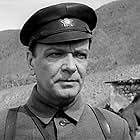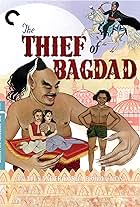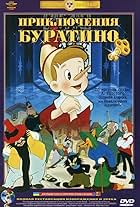VALUTAZIONE IMDb
7,1/10
528
LA TUA VALUTAZIONE
Aggiungi una trama nella tua linguaObsessed with perfecting his craft, young gemcutter Danilo visits the mystical Copper Mountain to uncover the secret behind its infamous attraction - the Stone Flower, a stone carving so cap... Leggi tuttoObsessed with perfecting his craft, young gemcutter Danilo visits the mystical Copper Mountain to uncover the secret behind its infamous attraction - the Stone Flower, a stone carving so captivating that no one can leave after seeing it.Obsessed with perfecting his craft, young gemcutter Danilo visits the mystical Copper Mountain to uncover the secret behind its infamous attraction - the Stone Flower, a stone carving so captivating that no one can leave after seeing it.
- Premi
- 2 vittorie e 2 candidature
Vladimir Druzhnikov
- Danilo - master
- (as V. Druzhnikov)
Yekaterina Derevshchikova
- Katya
- (as Y. Derevshchikova)
Mikhail Troyanovskiy
- Prokopych
- (as M. Troyanovsky)
Mikhail Yanshin
- Severyan
- (as M. Yanshin)
Nikolay Temyakov
- Barin
- (as N. Temyakov)
Anna Petukhova
- Barina
- (as A. Petukhova)
Nikolai Orlov
- Stary master
- (as N. Orlov)
Lidiya Deikun
- Vikhorika
- (as L. Deikun)
Serafim Zaytsev
- Yefimka
- (as S. Zaytsev)
Vitaliy Kravchenko
- Danilo - malchyk
- (as V. Kravchenko)
Trama
Lo sapevi?
- ConnessioniFeatured in Good Bye, Sowjetunion! (2021)
Recensione in evidenza
So says the grizzled old factory watchman at the conclusion of the folk tale he's been telling the children huddled around his fire through the Russian night. One of the young boys comes quietly up to him as the others leave, and tells him that he too wants to be a master-stoneworker, like the hero of the story: "ah!", says the watchman, "you got the point!" And the point's not just for children, either.
Ptushko's memorably beautiful film makes for a gripping parable about the conflict between the inner and outer life of the born artist, willing to risk sacrificing everything - even the woman he loves - in pursuit of artistic and technical perfection. At the secret heart of the Copper Witch's caverns, the Stone Flower itself represents that unattainable ideal of beauty, natural material fashioned so cunningly that it seems more real than reality itself. Danila, deeply unsatisfied with his work admired though it is by so many, has to study its form at any price, leaving his betrothal feast to pursue his ideal and hone his technique.
Will Danila break free of the Copper Witch's charms, and return to the "real world"? You'll have to watch the film to find out...
With only four significant characters - the young genius, the ageing and ailing master-craftsman who teaches (or is taught by) him, his faithful betrothed Katinka, and of course the Copper Witch herself - "Kamennyy tsvetok" is much more tightly structured and less riotously inventive than some of the other Ptuchko films I've been privileged to see, and the tension never flags.
Political content, too, is restrained - surprisingly so, given the film's date and the fact that it was (as other commentators have pointed out) the first major Russian film to be made in colour. The peasants are duly repressed by the fat and frivolous landowners and their brutal class-traitor henchmen, but (assuming that *my* brain has figured it out correctly!) the clear message is that whatever its conflicts with everyday life and relationships, art certainly transcends politics and class. Surprising indeed. There's even a moment in the beautifully depicted and choreographed folk betrothal where religious icons are bowed to with grace and reverence. It is amazing that Ptushko was daring enough to try to get that one past the censors, let alone manage to succeed!
The commentator who compared the visual feast on offer with Powell and Pressburger's roughly contemporary "The Red Shoes" was spot on: their "Tales of Hoffmann" is even closer in spirit. Ptushko's visual imagination and daring are in that league, and his colour process produced really breathtaking pictures. If his images here seem more illustrative and pictorial, less intrinsically filmic than the art of those English masters, they are none the less memorable. The magic scenes in the woods, and in the gem-sparkling caverns, are of a loveliness seldom matched in film of any era, and never surpassed.
The currently available RUSCICO DVD version is quite beautifully restored visually, and the sound is very acceptable too. With good extras, including a half-hour feature about Ptushko's life and work showcasing extracts from many of his other films, why not treat yourself and your family, if you have one, to this rich folk-tale? If you respond to it as I did, you may even manage - for one brief, shining moment - to feel that you are nine years old once again!
Ptushko's memorably beautiful film makes for a gripping parable about the conflict between the inner and outer life of the born artist, willing to risk sacrificing everything - even the woman he loves - in pursuit of artistic and technical perfection. At the secret heart of the Copper Witch's caverns, the Stone Flower itself represents that unattainable ideal of beauty, natural material fashioned so cunningly that it seems more real than reality itself. Danila, deeply unsatisfied with his work admired though it is by so many, has to study its form at any price, leaving his betrothal feast to pursue his ideal and hone his technique.
Will Danila break free of the Copper Witch's charms, and return to the "real world"? You'll have to watch the film to find out...
With only four significant characters - the young genius, the ageing and ailing master-craftsman who teaches (or is taught by) him, his faithful betrothed Katinka, and of course the Copper Witch herself - "Kamennyy tsvetok" is much more tightly structured and less riotously inventive than some of the other Ptuchko films I've been privileged to see, and the tension never flags.
Political content, too, is restrained - surprisingly so, given the film's date and the fact that it was (as other commentators have pointed out) the first major Russian film to be made in colour. The peasants are duly repressed by the fat and frivolous landowners and their brutal class-traitor henchmen, but (assuming that *my* brain has figured it out correctly!) the clear message is that whatever its conflicts with everyday life and relationships, art certainly transcends politics and class. Surprising indeed. There's even a moment in the beautifully depicted and choreographed folk betrothal where religious icons are bowed to with grace and reverence. It is amazing that Ptushko was daring enough to try to get that one past the censors, let alone manage to succeed!
The commentator who compared the visual feast on offer with Powell and Pressburger's roughly contemporary "The Red Shoes" was spot on: their "Tales of Hoffmann" is even closer in spirit. Ptushko's visual imagination and daring are in that league, and his colour process produced really breathtaking pictures. If his images here seem more illustrative and pictorial, less intrinsically filmic than the art of those English masters, they are none the less memorable. The magic scenes in the woods, and in the gem-sparkling caverns, are of a loveliness seldom matched in film of any era, and never surpassed.
The currently available RUSCICO DVD version is quite beautifully restored visually, and the sound is very acceptable too. With good extras, including a half-hour feature about Ptushko's life and work showcasing extracts from many of his other films, why not treat yourself and your family, if you have one, to this rich folk-tale? If you respond to it as I did, you may even manage - for one brief, shining moment - to feel that you are nine years old once again!
- Quotation-of-Dream
- 5 nov 2007
- Permalink
I più visti
Accedi per valutare e creare un elenco di titoli salvati per ottenere consigli personalizzati
Dettagli
- Tempo di esecuzione1 ora 29 minuti
- Mix di suoni
- Proporzioni
- 1.37 : 1
Contribuisci a questa pagina
Suggerisci una modifica o aggiungi i contenuti mancanti

Divario superiore
By what name was Il fiore di pietra (1946) officially released in Canada in English?
Rispondi
























